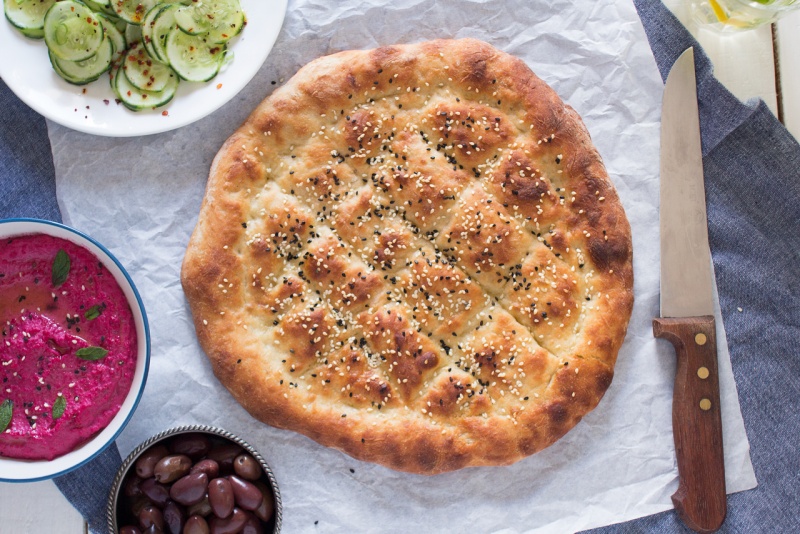
As I have mentioned before, both me and Duncan have a soft spot for a particular type of Turkish bread – flat, fluffy loaf traditionally eaten during Ramadan. Sometimes, it’s topped with sesame seeds, sometimes with pul biber (Turkish chilli), either way it is delicious.
We got hooked on it when we used to live in North-East London next door to a Turkish bakery. They sold these amazing Turkish breads, straight from the oven, for 80p each and their tantalising smell made it impossible to go past without buying some! It’s fabulous when it’s still warm and fresh, but even a day or two later it tastes delicious cut into thin strips, lightly toasted on a griddle pan and served with a selection of mezze dishes to dip it into.
Since we no longer live in London, now I have to twist Duncan’s arm to make us Turkish bread now and again. To be honest, he is not that resistant to it as this is one of the easiest breads you’ll make.
It requires no kneading! You cannot believe it? I was a bit sceptical too, but try it – proof is in the erm…bread. It’s light and airy, full of air pockets and so irresistible that you’ll wanna eat the whole loaf at one sitting. Just a word of warning, don’t do it if you intend to go running an hour later. This last bit of info is NOT BASED on personal experience at all:).
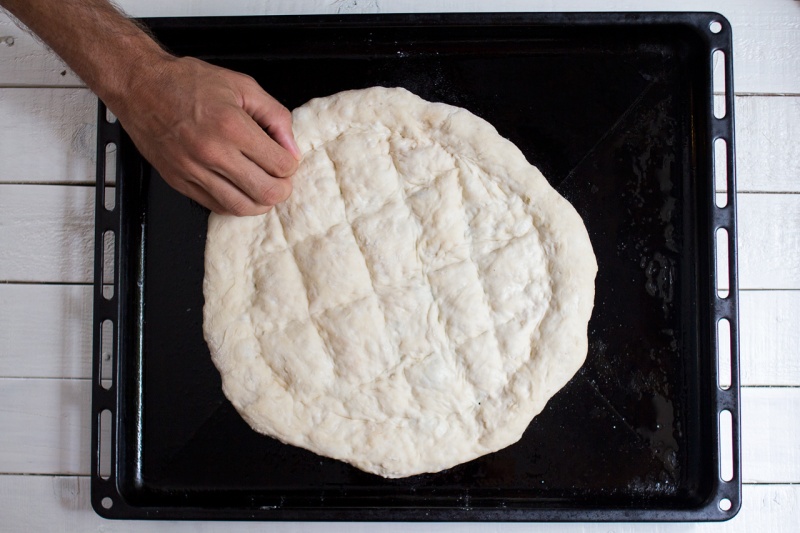
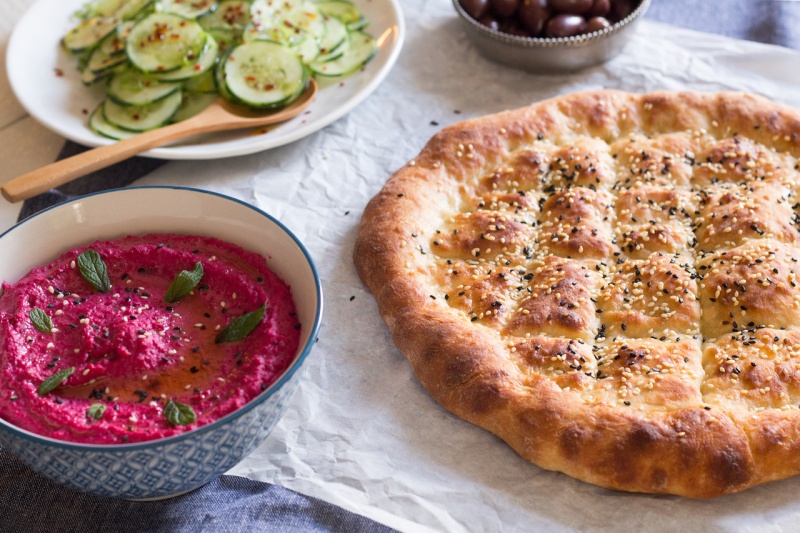
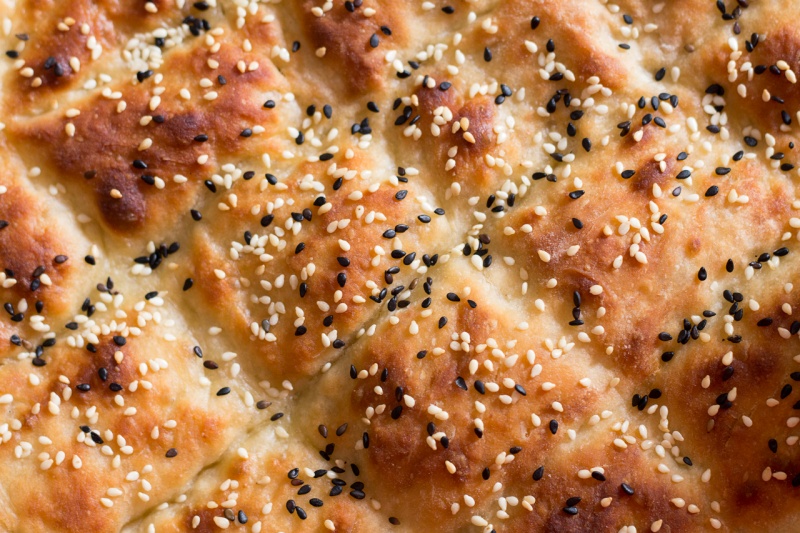
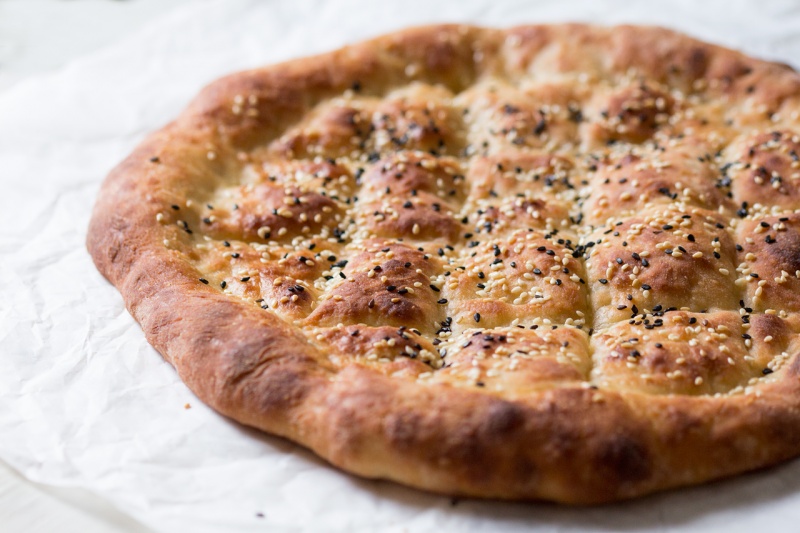
- 250 g / 2 cups bread flour
- 7 g / 0.25 oz / 2¼ tsp instant dried yeast
- 200 ml / ¾ cup + 4 tsp warm water
- 2 tsp caster/fine sugar
- 1 tsp fine salt
- 15 ml / 1 tbsp olive oil, for glazing
- handful of white and black sesame seeds
- Mix the flour, sugar and salt in a large mixing bowl.
- Create a small well in the middle of the flour and add the yeast. Pour the water into the well and mix everything together with your hands. At this stage the dough should be very wet and fairly hard to manage.
- Cover the mixing bowl with cling film and leave to prove for about one hour (or until it has doubled in size).
- Flour a work surface and tip the proven dough out on to the work surface making sure to add lots of flour to avoid sticking. Shape the dough into a flat circle (about 2-3 cm high).
- Place the dough on a olive oil-greased baking tray. Cover the dough with a tea towel and leave to prove for another 45 minutes. Preheat the oven to 250° C / 480° F in the last 20 minutes of this time.
- Dent the top of the dough by first drawing a rough inner circle (with your fingertips) of about 3 cm from the edge of the bread. Then fill in the centre of the inner circle with criss-crossed diagonal lines about 2-3 cm apart (see 2nd picture in this recipe to get the idea).
- Using a pastry brush, coat the top of the bread with olive oil. Sprinkle with black and white sesame seeds and press the seeds in as far as you can to make sure that they stay in the bread.
- Bake the bread for 8 minutes at 250° C / 480° F and then turn the oven down to 200° C / 390° F and bake for another 5 minutes (or until golden brown).

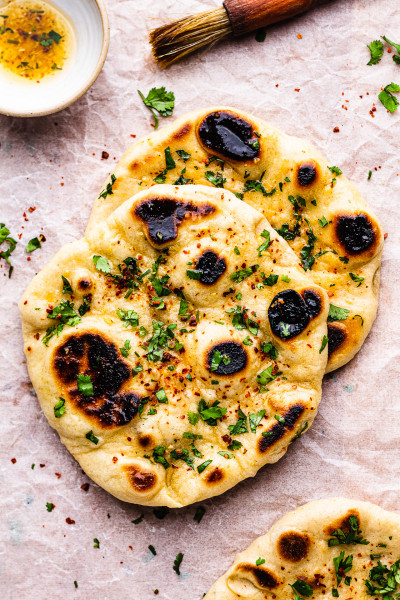
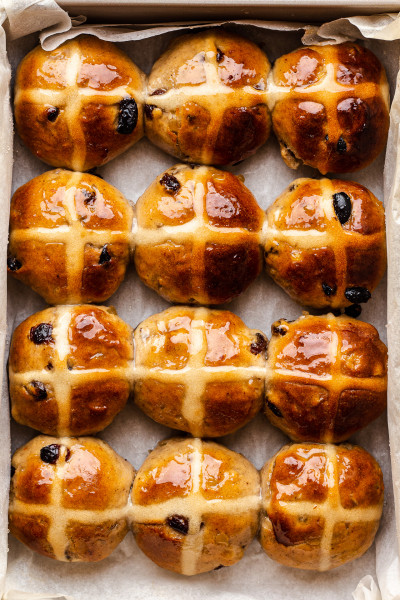
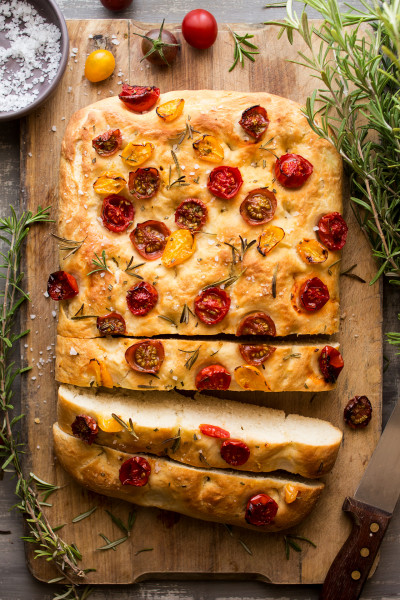
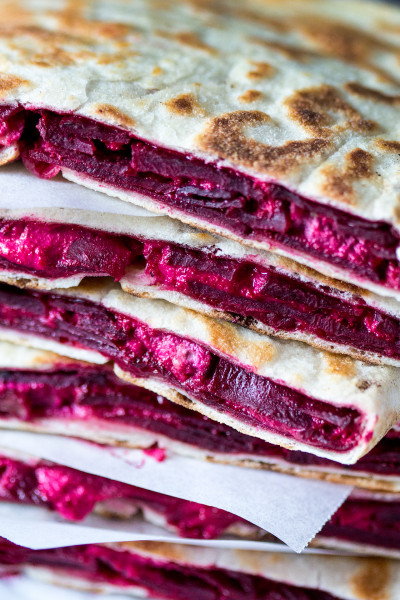
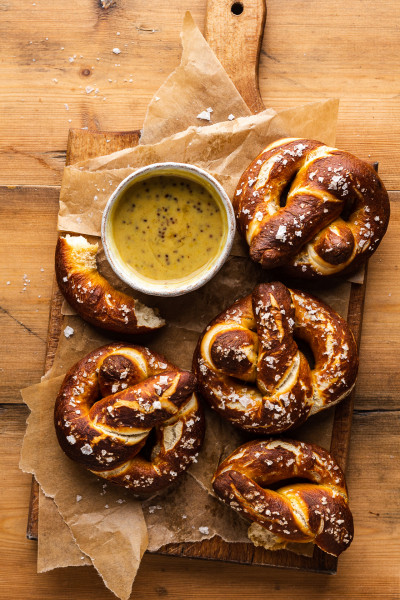
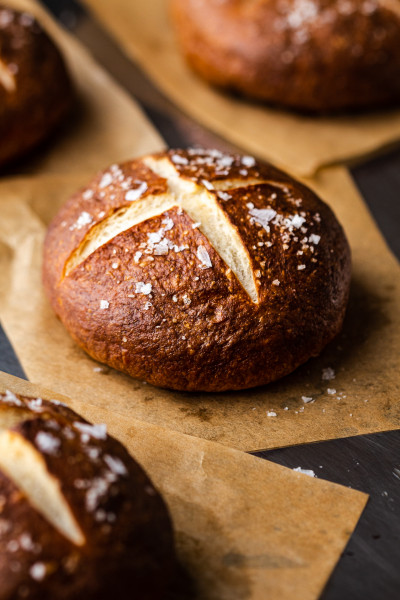

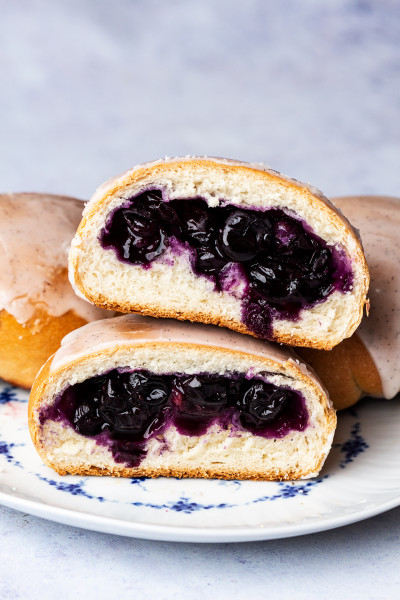
Thanks for this recipe
Sure you can (you'll need about 30 g) but you'll need to activate them first of course. Hope that helps! Ania
It should be okay I am guessing, it will be extra fluffy, I imagine. Ania
It depends what kind of yeast you are using. We used fast-action, also known as instant, yeast, which do not need prior activation. They are added straight into the flour. If your yeast is of any different type you'll need to activate it first and then add it in, but please be careful not to add any extra liquid to begin with as your dough might be too wet. You can always add a touch later if you find that it is not coming together. Hope that helps! Ania
I'm no stranger to Pizza Dough but I'm blown away by the simple recipe and wonderful tasty bread, slightly crispy outside with a dense fluffy risen center like at the Turkish restaurants.
I made it as a snack with just Olive Oil and Smoked Garlic Balsamic, homemade Hummus and Spicy Olives will accompany my next attempt total star!
As I have started getting into sourdough bread making, last week I made this with a bit of sourdough starter and adjusting accordingly. Was sooooo good. I have a rye starter and white starter and did 100g of starter so reduced the flour and water in the recipe by 50g each respectively to compensate for my amendment
Off to make two batches now ... :)
I love making bread and I've never made Turkish bread but was thinking would it be possible to use Whole-wheat flour or would it need to prove for a lot longer..
Thank you!
I'm sure it is possible although I have never had a Turkish bread made with that type of flour. I don't think it will affect the proofing time massively, but the texture of the bread will for sure be different, less delicate and possibly less fluffy. Maybe try half half to begin with? Glad to hear that you are a fan of my spread recipes. x Ania
I'm a bit confused as this recipe does not call for baking powder. I think you must mean that you don't have instant yeast, in which case, yes, it is fine to use live yeast but follow the instructions on the packet before adding them to the flour. Hope that helps! Ania
It's generally not recommended as all purpose flour is a bit too soft for bread, but if that's all you have and want to use it up, it will still come out, but the texture will be a bit different. Hope that helps! Ania
I love this bread and the taste is spot on. Just a quick question. I only have a mini oven and the max temperature is 230 degrees. How much longer would you recommend I bake it for? Thank you for sharing an amazing recipe that’s exactly how Turkish Pide should be.
It's a guess, but I would say 10 minutes more! Alternatively, if your mini oven has a fan function, use that - it increases the temprature by about 20 degrees, which is exactly as much as you need. Hope that helps! Ania
It will be okay, but homemade bread is never as good as on the day it was made before. If you decide to do that, cover it with a kitchen towel overnight and perhaps toast it on a lightly oiled griddle pan before serving. Hope that helps! Ania
Strong flour is the same as bread flour. Excited to hear that you're planning on making this - hope you'll like it! :) Ania
Nom!! Nom!!
I think you run the risk of the dough overproofing and turning into a gluey mess. In theory, cool temperature should halt the proofing process but whenever I tried doing that the dough kept on raising despite being in the fridge.
Hope that helps,
Ania
I have pushed roasted garlic into the top and have now tried rosemary and salt on top. Awesome.
For soft crust you need to cover the bread with a kitchen towel when you take it out of the oven.
Do you know if kneading would improve this bread?
Thanks!
Thanks for your feedback! I've never tried it with kneading but I think it would probably not be too much different...But that's a guess!
Cheers!